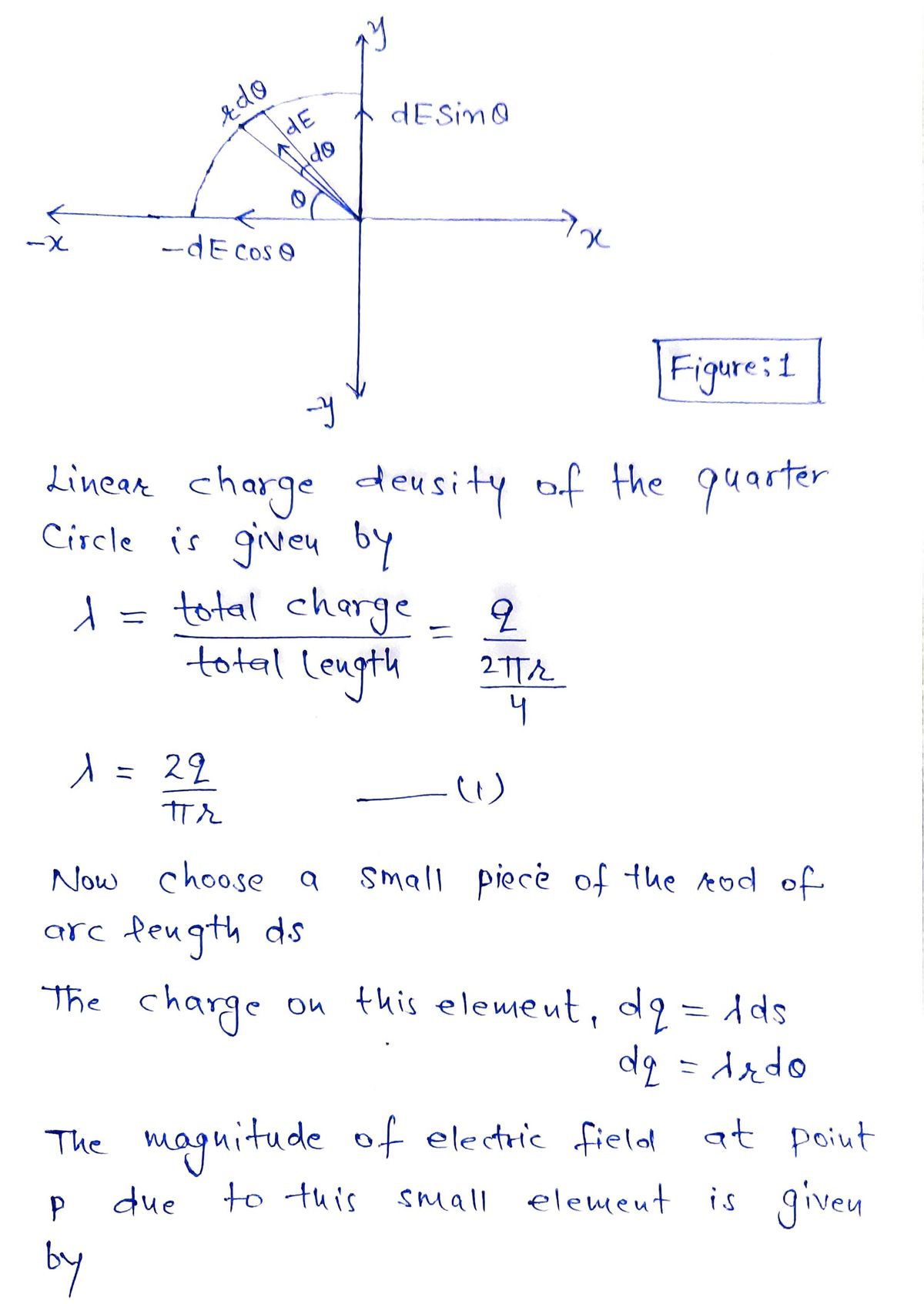Achargeofq=−9.0μCisuniformlydistributedaroundaquartercircleofradiusr=12.0cm(seefigure). Find the electric field E at point P located at the center of curvature.
Achargeofq=−9.0μCisuniformlydistributedaroundaquartercircleofradiusr=12.0cm(seefigure). Find the electric field E at point P located at the center of curvature.
College Physics
11th Edition
ISBN:9781305952300
Author:Raymond A. Serway, Chris Vuille
Publisher:Raymond A. Serway, Chris Vuille
Chapter1: Units, Trigonometry. And Vectors
Section: Chapter Questions
Problem 1CQ: Estimate the order of magnitude of the length, in meters, of each of the following; (a) a mouse, (b)...
Related questions
Question
Achargeofq=−9.0μCisuniformlydistributedaroundaquartercircleofradiusr=12.0cm(seefigure). Find the electric field E at point P located at the center of curvature.

Transcribed Image Text:This image illustrates a coordinate plane with a vector diagram:
- The diagram consists of the X (horizontal) and Y (vertical) axes, intersecting at point O (origin).
- Point P is on the plane, defined by its coordinates (x, y).
- A vector OP is drawn from the origin O to the point P.
- The vector OP forms an angle q with the positive X-axis.
- The distance from O to P is represented as r, which is the magnitude of the vector.
- The angle q is highlighted, indicating the direction of the vector in polar coordinates.
- The diagram is useful for explaining concepts of vectors, polar coordinates, and trigonometry, showing the relationships between Cartesian (x, y) and polar (r, q) coordinates.
Expert Solution
Step 1



Step by step
Solved in 2 steps with 4 images

Knowledge Booster
Learn more about
Need a deep-dive on the concept behind this application? Look no further. Learn more about this topic, physics and related others by exploring similar questions and additional content below.Recommended textbooks for you

College Physics
Physics
ISBN:
9781305952300
Author:
Raymond A. Serway, Chris Vuille
Publisher:
Cengage Learning

University Physics (14th Edition)
Physics
ISBN:
9780133969290
Author:
Hugh D. Young, Roger A. Freedman
Publisher:
PEARSON

Introduction To Quantum Mechanics
Physics
ISBN:
9781107189638
Author:
Griffiths, David J., Schroeter, Darrell F.
Publisher:
Cambridge University Press

College Physics
Physics
ISBN:
9781305952300
Author:
Raymond A. Serway, Chris Vuille
Publisher:
Cengage Learning

University Physics (14th Edition)
Physics
ISBN:
9780133969290
Author:
Hugh D. Young, Roger A. Freedman
Publisher:
PEARSON

Introduction To Quantum Mechanics
Physics
ISBN:
9781107189638
Author:
Griffiths, David J., Schroeter, Darrell F.
Publisher:
Cambridge University Press

Physics for Scientists and Engineers
Physics
ISBN:
9781337553278
Author:
Raymond A. Serway, John W. Jewett
Publisher:
Cengage Learning

Lecture- Tutorials for Introductory Astronomy
Physics
ISBN:
9780321820464
Author:
Edward E. Prather, Tim P. Slater, Jeff P. Adams, Gina Brissenden
Publisher:
Addison-Wesley

College Physics: A Strategic Approach (4th Editio…
Physics
ISBN:
9780134609034
Author:
Randall D. Knight (Professor Emeritus), Brian Jones, Stuart Field
Publisher:
PEARSON